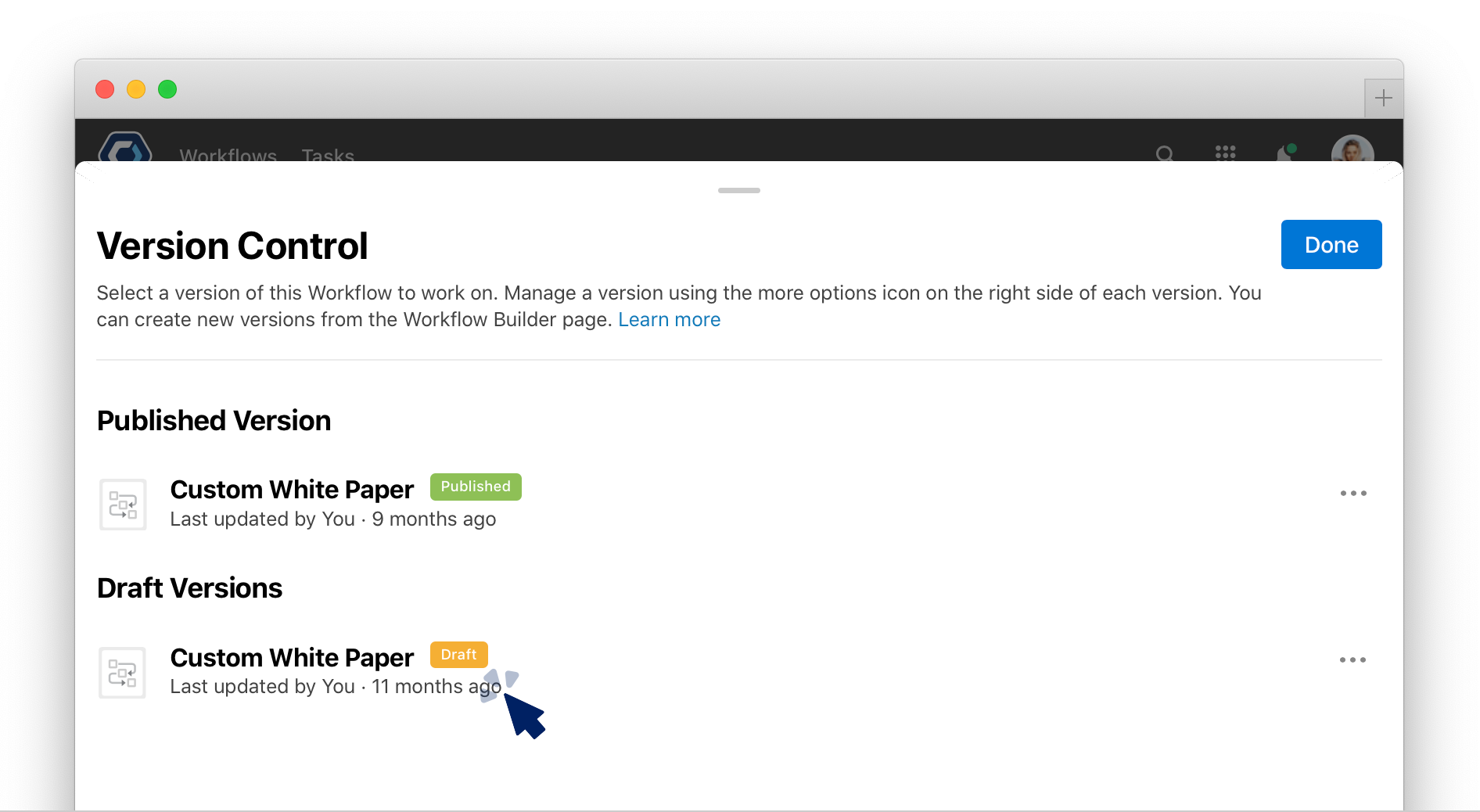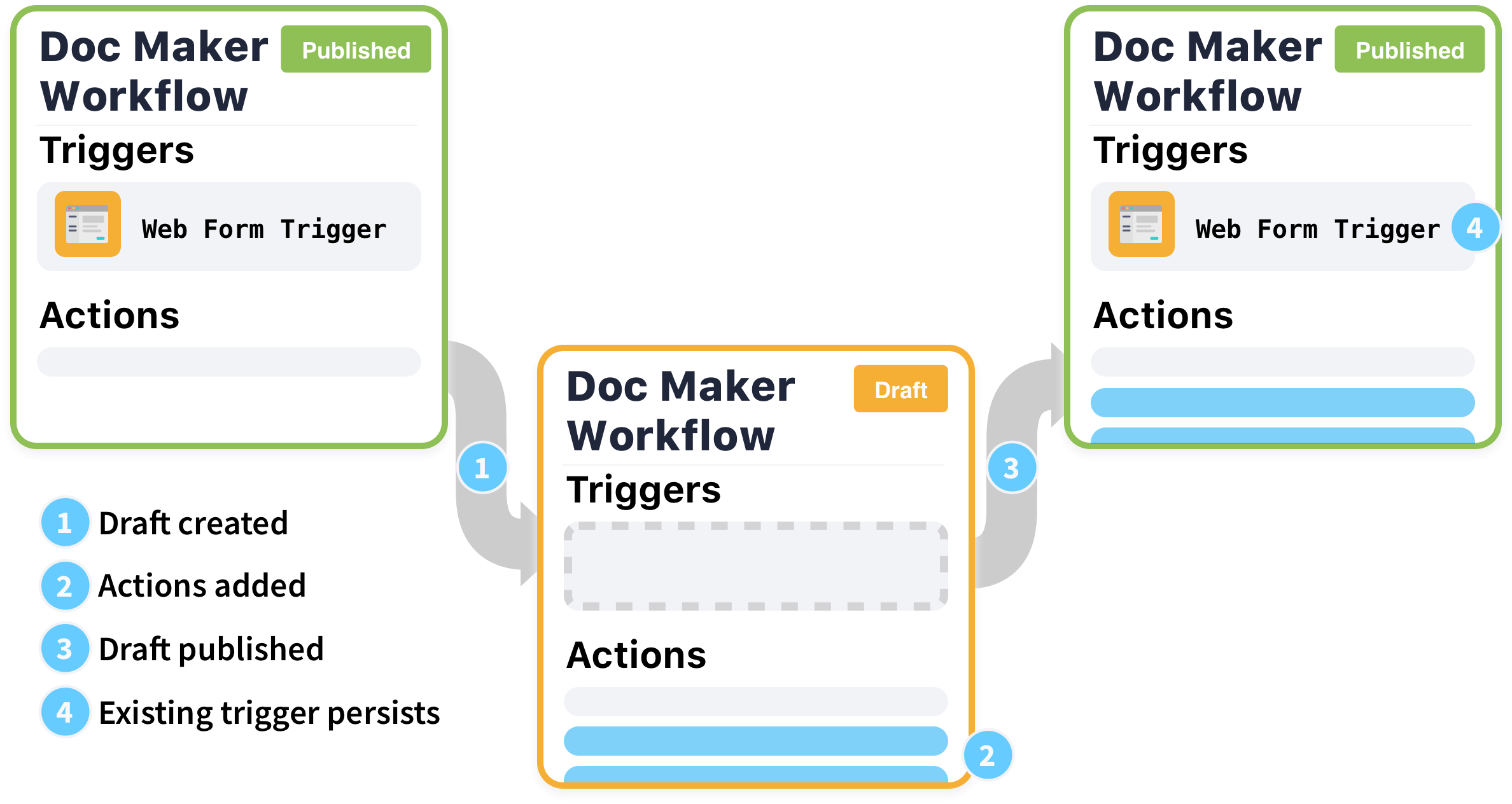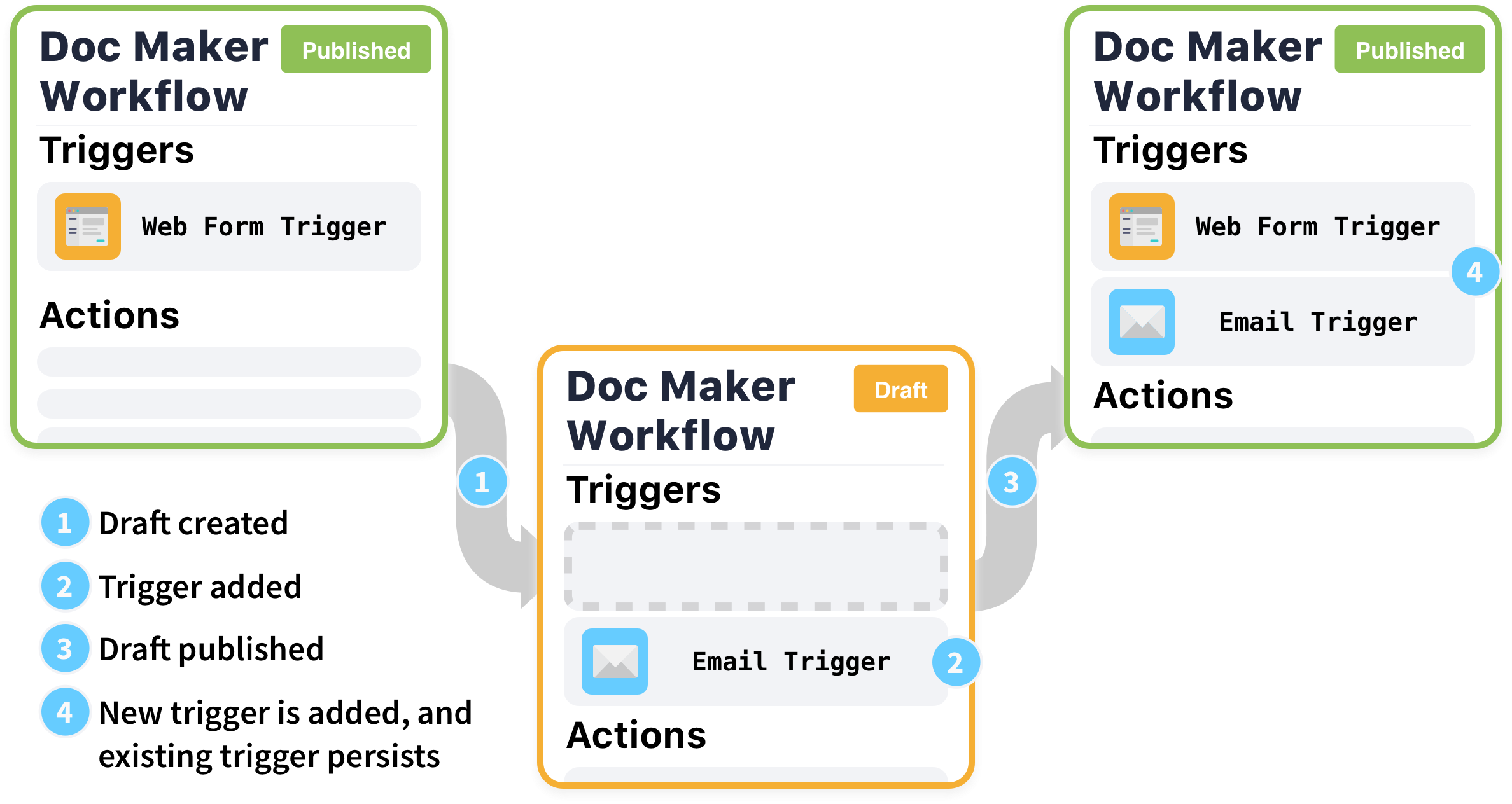 Version Control
Version Control
All Workflow’s support versioning. By default, a new Workflow is considered “Published”. Using versions, you can create “Draft” versions of a Workflow, where changes can be safely made without affecting the published version.
New versions are always created based on the latest published version. It’s not possible to create a draft off of a draft.
Use case 
Use Version Control when you want to edit or update a Workflow but don’t want to affect a live Workflow while the changes are in progress.
Example
- Olivia has a high profile Workflow she needs to completely rework. To make sure the current Workflow still functions while she makes changes, she uses Version Control and creates draft version so she can make changes at her own pace without affecting the live Workflow. When she’s done, she can publish the draft and replace the live version.
Using Version Control 
Version Control is accessible per-Workflow from the builder page. You can create, switch between, and remove versions from builder.
How to create a Workflow draft 
-
From the Workflow Builder page, select

How to switch between Workflow versions 
-
From the Workflow Builder page, select
in the top right and select Version Control.

-
From the Version Control window, select the version you wish to switch to.
How versioning works when actions require a Workflow ID 
When you first create a Workflow, the Workflow/Process is assigned a unique ID. We will refer to this as the Root ID. Some actions, like Workflow: Start Another Workflow, require this Root ID to identify the right process.
The Root ID will never change, and will always point to the current published version. This means that if Workflow B references Workflow A by the ID, Workflow B will not need to be updated every time Workflow A publishes a new version.
If necessary, it is also possible to reference a specific draft version by the process ID. You can find the ID in the URL with a draft version open. It is not recommended to reference draft versions, as there is no Root ID for a draft, and the draft process ID is voided when the draft is published.
How triggers work in Workflow drafts 
When you create a Workflow draft, triggers are not included in the draft. This is done intentionally to avoid having duplicate triggers across multiple versions, all triggering simultaneously.
In other words, if you have a published Workflow with a web form trigger, and create a draft of it, you will not see the web form trigger in the draft. Then, once you publish the Workflow draft, the published Workflow is replaced by the draft as expected—but the existing published triggers persist.

How to edit a published trigger in a Workflow draft 
There are two recommended ways to edit a trigger: Edit the trigger in the published Workflow, or create a new trigger in draft mode, then upon publishing it, delete the existing trigger. This works because any triggers added in the draft are carried over when they are published, as in the example below:

Require approval to publish a Workflow 
By default, all PagerDuty Workflow Automation users with Builder permission can edit, create, and publish Workflows. With Publish Control enabled, you can require all draft Workflows to be reviewed before publication, and start new Workflows in draft mode by default.
With Publish Control, users can no longer publish drafts, and instead make requests to publish. Whenever a user requests to publish their draft, an instance of an approval Workflow starts. If the approval Workflow is approved, the draft is published; if the Workflow is not approved, the draft is rejected. PagerDuty Workflow Automation provides a prebuilt approval Workflow, or you can even create your own.
Get help with a problem or question 
If something’s not working as expected, or you’re looking for suggestions, check through the options below.
Why is my trigger not appearing, or why can’t I find my trigger in my Workflow draft?
When you create a Workflow draft, triggers are not included the draft. This is done intentionally so you do not have duplicate triggers across multiple versions, all triggering simultaneously.
For more information, see How triggers work in Workflow drafts.
Can I still use test mode on draft versions?
Test mode works identically across all Workflow versions. You have the choice to assign all tasks to yourself, and the test instance will not be factored into the Workflow’s statistics. Draft instances do not appear on the instance detail page.
Thanks for your feedback
We update the Help Center daily, so expect changes soon.
Link Copied
Paste this URL anywhere to link straight to the section.
